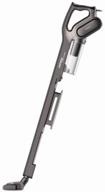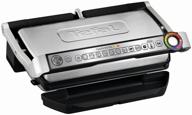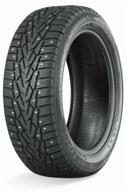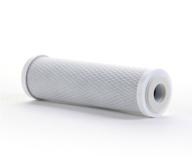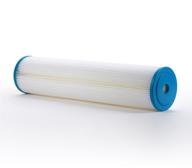Removing Contaminants from Liquids and Gases
Industrial processes often generate contaminated liquids and gases that require filtration to remove impurities. These contaminants can reduce product quality, damage equipment, and cause environmental issues if released untreated. Industrial filtration solutions are designed to efficiently remove contaminants and purify process streams.
Types of Industrial Process Contaminants
Common contaminants found in industrial liquids and gases include:
- Particulates and solids
- Oils and grease
- Organic compounds
- Dissolved minerals and salts
- Acids and bases
- Bacteria and microorganisms
The composition and concentration of contaminants depends on the specific industrial process. For example, machining fluids contain metal particles, while acids and bases are common in chemical production processes.
Filtration Methods
Industrial filtration utilizes mechanical, physical, biological and chemical methods to remove contaminants. Common techniques include:
| Method | Description |
|---|---|
| Mechanical | Screening, hydrocyclones, settling tanks |
| Physical | Adsorption, absorption, membrane filters |
| Biological | Activated sludge, biofiltration |
| Chemical | Chemical precipitation, oxidation, neutralization |
The optimum filtration method depends on contaminant type, stream characteristics, and treatment objectives.
Benefits of Industrial Process Filtration
Installing the right filtration systems provides many benefits including:
- Improved product quality - Removing impurities improves purity and consistency.
- Protecting equipment - Filtering abrasive particulates reduces component wear and corrosion.
- Waste reduction - Capturing contaminants reduces disposal costs and environmental impact.
- Compliance - Filtration helps meet regulatory standards for effluent discharge and emissions.
- Process optimization - Clean fluids improve operating efficiency and reduce downtime.
By removing liquids and gases contaminants, industrial filtration solutions play a vital role in supporting efficient, sustainable production processes across sectors.
Improving Product Quality and Purity
Achieving high levels of product quality and purity is critical for manufacturers across industries. Strict purity standards help ensure final products meet specifications, perform reliably, and satisfy customer expectations. Industrial filtration is an effective way to remove contaminants and enhance quality.
Causes of Contamination
Contaminants that degrade quality can be introduced at various stages:
- Raw materials - Impurities inherent in raw ingredients or materials
- Processing - Generated during manufacturing steps like machining, chemical reactions, heating/cooling etc.
- Handling - Contamination during transport, storage or packaging
- Equipment - Leakages, corrosion, or component wear
Even tiny amounts of particulates, moisture, oils or chemicals can make a big difference in product purity and function.
How Filtration Improves Purity
Filtration is an important purification step in manufacturing. It removes contaminants using techniques like:
- Screening - Physically blocks particles larger than filter pore sizes
- Adsorption - Contaminants adhere to the filter media surface
- Depth filtration - Contaminants trapped within the filter thickness
- Membrane filtration - Sieving at molecular scale with semipermeable membrane
Filtration is used to purify:
- Liquids - Water, solvents, oils, chemicals
- Gases - Air, gas streams, vacuum processes
- Solids - Powders, granules
Specific filtration processes match contaminant characteristics for optimal removal efficiency.
Benefits of Improved Purity
Highly pure products offer many advantages:
- Higher performance - Contaminants degrade product properties and function
- Less waste - Fewer rejects and need for rework
- Regulatory compliance - Meet purity specifications and standards
- Consumer satisfaction - Products seen as higher quality and worth premium price
- Brand reputation - Competitive edge from consistent purity
- Improved operations - Less downtime and maintenance when systems run contaminant-free
For critical applications in industries like pharmaceuticals, electronics, and automotive, maintaining purity is essential.
Achieving Purity Targets
Steps to optimize industrial filtration for purity include:
- Identify purity requirements and set targets
- Analyze process streams for contaminants
- Select appropriate filtration methods and equipment
- Validate system performance with tests
- Continuously monitor filtrate purity
- Optimize process controls to maintain consistency
With strategic filtration, manufacturers can protect product purity from incoming materials to final packaging.
Preventing Equipment Damage and Wear
Industrial equipment handles high pressures, temperatures, and heavy use. These demanding conditions lead to damage over time in the form of corrosion, erosion, component wear and fatigue. Equipment failures cause costly downtime and require expensive repairs or replacement. Proper filtration is a key way to prevent premature equipment damage and wear.
How Contaminants Damage Equipment
Common contaminants that degrade equipment include:
- Particulates - Cause abrasive wear and surface erosion
- Moisture - Promotes corrosion of metallic components
- Acids/bases - Result in corrosive degradation
- Dissolved salts - Lead to scale deposits in heat exchangers
- Oils/grease - Can coat and foul inner surfaces
Specific mechanisms of equipment damage include:
- Abrasive wear - Hard particles in fluids physically grind metal surfaces
- Erosion corrosion - Combined effect worsens material loss
- Fouling - Buildup of deposits impedes fluid flow and heat transfer
- Cavitation - Bubbles forming and collapsing erode surfaces
- Fatigue - Cyclic stresses weaken components over time
How Filtration Prevents Damage
Proper filtration removes problematic particulate and fluid contaminants. Key techniques include:
- Strainers - Capture large particles that could abrade surfaces
- Adsorbers - Remove liquids, gases, odors, and organic compounds
- Coalescers - Separate immiscible liquids like oil and water
- Microfiltration - Filters out tiny particles down to 0.1 microns
- Desiccants - Reduce system moisture to minimize corrosion
Filtration treats process fluids as well as incoming air and water supplies. Preventive solutions include:
- Line strainers - Protect pumps, valves, nozzles
- Lube oil filters - Keep hydraulic fluids contaminant-free
- Air intake filters - Clean incoming air to pneumatic systems
- Cooling water filters - Remove solids and organics that foster corrosion
Benefits of Filtration
Effective filtration provides many maintenance and operational benefits:
- Extended equipment life due to reduced wear and corrosion
- Improved reliability and availability
- Decreased repair costs and downtime
- Lower replacement costs
- Consistent fluid flows and heat transfer
- Reduced fouling and clogging of lines
Overall, proper filtration is a cost-effective way to safeguard capital equipment investments and prevent unplanned maintenance headaches.
Reducing Waste and Environmental Impact
Industrial processes inevitably generate liquid, solid, and gaseous byproducts and waste streams. Discharging or disposing of these untreated wastes can pollute the environment. Filtration provides an effective way for industries to reduce waste volumes and minimize ecological impacts.
Sources of Process Waste
Waste contaminants produced during manufacturing include:
- Wastewater - Oils, solvents, dissolved solids, organics, particulates
- Air emissions - Volatile organic compounds (VOCs), particulate matter (PM), odors
- Solid waste - Sludges, spent catalysts, ash, scrap materials
Certain industries like mining, textiles, and energy are especially waste-intensive. But all processes generate residues and byproducts.
Using Filtration to Reduce Waste
Filtration can recover and recycle valuable materials from waste streams. Key techniques include:- Membrane filtration - Separate and concentrate contaminants for recovery
- Media beds - Adsorb volatile organics from air emissions
- Settling tanks - Allow particulates to be collected
- Nutsche filters - Capture solids from liquids
- Activated carbon - Adsorb and remove pollutants
Benefits of filtering waste include:
- Reduced disposal costs
- Lower waste management fees
- Recovered byproducts can generate revenue
- Conserves resources and energy
Preventing Environmental Contamination
Filtration enables industries to:- Comply with discharge limits for wastewater effluents and air emissions
- Avoid polluting water bodies, land, and communities
- Prevent ecological damage from improper waste disposal
- Scrubber systems to remove air pollutants
- Treating mine tailings before discharge
- Oil water separators for bilge and ballast water
- Filtering heavy metals from electroplating rinse waters
Achieving Sustainability Goals
Filtration aligns with core sustainability objectives:
- Pollution prevention - Filters out contaminants at the source
- Waste minimization - Reduces volumes requiring disposal
- Compliance - Meets effluent limits for safe discharge
- Resource conservation - Allows reuse and recycling
Specifying high-efficiency filtration systems demonstrates an organization’s commitment to environmental stewardship.
Complying with Industry Standards and Regulations
Industrial facilities must comply with government regulations and industry standards governing air emissions, wastewater discharges, solid wastes, and more. Filtration systems provide an effective way to meet prescribed contaminant limits and avoid noncompliance penalties.
Key Regulations
Important environmental compliance regulations include:
- Clean Air Act - Limits on air contaminants like particulates, VOCs, NOx, and SOx
- Clean Water Act - Restrictions on pollutants discharged to surface waters
- RCRA - Hazardous waste handling and disposal requirements
- Industry-specific rules - Tailored to sectors like mining, petroleum, chemical
Regulated contaminants have known adverse health and environmental impacts. Permits mandate allowable concentrations and total loading rates.
How Filtration Helps Comply
Filtration treats gaseous emissions and liquid effluents to remove regulated pollutants. Examples include:
- Wet scrubbers - Absorb gases like SO2 and particulate matter
- Baghouses - Filter particulate emissions from industrial exhaust streams
- Activated carbon - Adsorbs VOCs, heavy metals, and other hazardous pollutants
- Sand filters - Remove suspended solids from wastewater
- Reverse osmosis - Concentrates and recovers contaminants
Proper system design ensures effluent quality meets permitted discharge limits.
Avoiding Noncompliance Penalties
Filtration prevents pollution limit excursions and associated fines, including:
- Permit violations - Exceeding contaminant concentration or loading limits
- Improper monitoring or reporting - Failure to adequately sample or document
- Improper waste handling - Inadequate labeling, storage, manifesting, etc.
Reliable filtration reduces regulatory liability risks that commonly arise from insufficient treatment capacity or equipment failure.
Meeting Industry Standards
In addition to regulations, sectors maintain their own standards, such as:
- ISO 14001 Environmental Management System
- Responsible Care Program for chemical industry
- Mining industry sustainability framework
- Codes of practice for wastewater management
Filtration installation demonstrates an organization's commitment to sound environmental management.
Choosing the Right Filtration Solutions
Selecting effective filtration systems requires carefully evaluating process requirements, contaminant characteristics, and operation conditions. Key steps for choosing appropriate industrial filtration solutions include:
Understand the Process
- Analyze all process streams needing filtration
- Identify contaminants and permissible limits
- Assess flow rates, pressure drops, temperatures
- Consider future process changes and expansions
Define Filtration Objectives
- Clarify goals - waste reduction, emissions compliance, product purity etc.
- Determine required filtration efficiency and capacity
- Set performance targets aligned with objectives
Research Filtration Methods
- Screens, strainers - for coarse particulates
- Sand, multimedia - for suspended solids
- Activated carbon - for VOCs and dissolved organics
- Reverse osmosis - for ions and minerals
- HEPA - for fine particulates
- Consider advantages of different techniques
Select Equipment
- Batch or continuous operation
- Disposable or cleanable media
- Level of automation needed
- Capital and operational costs
- Vendor service and support capabilities
Determine Supporting Requirements
- Piping, valves, and pumps
- Instrumentation and controls
- Utilities - electricity, compressed air, etc.
- Structural supports and installation needs
- Safety features - guards, explosion proof
Plan Testing and Monitoring
- Procedures for media change-outs, backwashing, and replacements
- Methods to sample and analyze influents and effluents
- Online instrumentation for monitoring
- Equipment inspections and maintenance schedules
Carefully selecting filtration solutions based on process needs and conditions helps ensure optimal contaminant removal and operational reliability.
Similar products
What is the use of Amazon Prime for a regular buyer of Industrial Process Filtration?
For companies that regularly purchase industrial process filtration products, an Amazon Prime membership can provide several benefits:
Free Two-Day Shipping
Amazon Prime offers free two-day shipping on millions of eligible products. For industrial buyers who rely on filtration equipment like bag filters, cartridge filters, and filter presses for their manufacturing operations, getting these items quickly is essential.
The fast free shipping can help reduce downtime when replacement filters or parts are needed. It can also provide more flexibility in ordering smaller quantities more frequently rather than stockpiling larger inventories.
Free One-Day Delivery
For an additional cost, Prime members can upgrade to one-day delivery on many items. This express shipping is useful for urgently needed filtration products or critical replacement parts.
One-day delivery enables companies to get immediate access rather than wait days for a shipment to arrive by standard ground transportation when a unit goes offline unexpectedly.
Prime Savings and Deals
Prime members get special discounts and savings on select products. There are also Prime-exclusive deals across all product categories, including industrial supplies.
For regular filtration buyers, the lower prices on consumable filter media, canister filters, cartridges, and other recurring purchases can lead to substantial savings over time.
The Lightning Deals and limited-time promotions offer additional opportunities to get filtration equipment and maintenance items at discounted prices.
Overall, the benefits of free fast shipping, discounts, and deals make Amazon Prime a valuable membership for industrial organizations with routine filtration needs.






